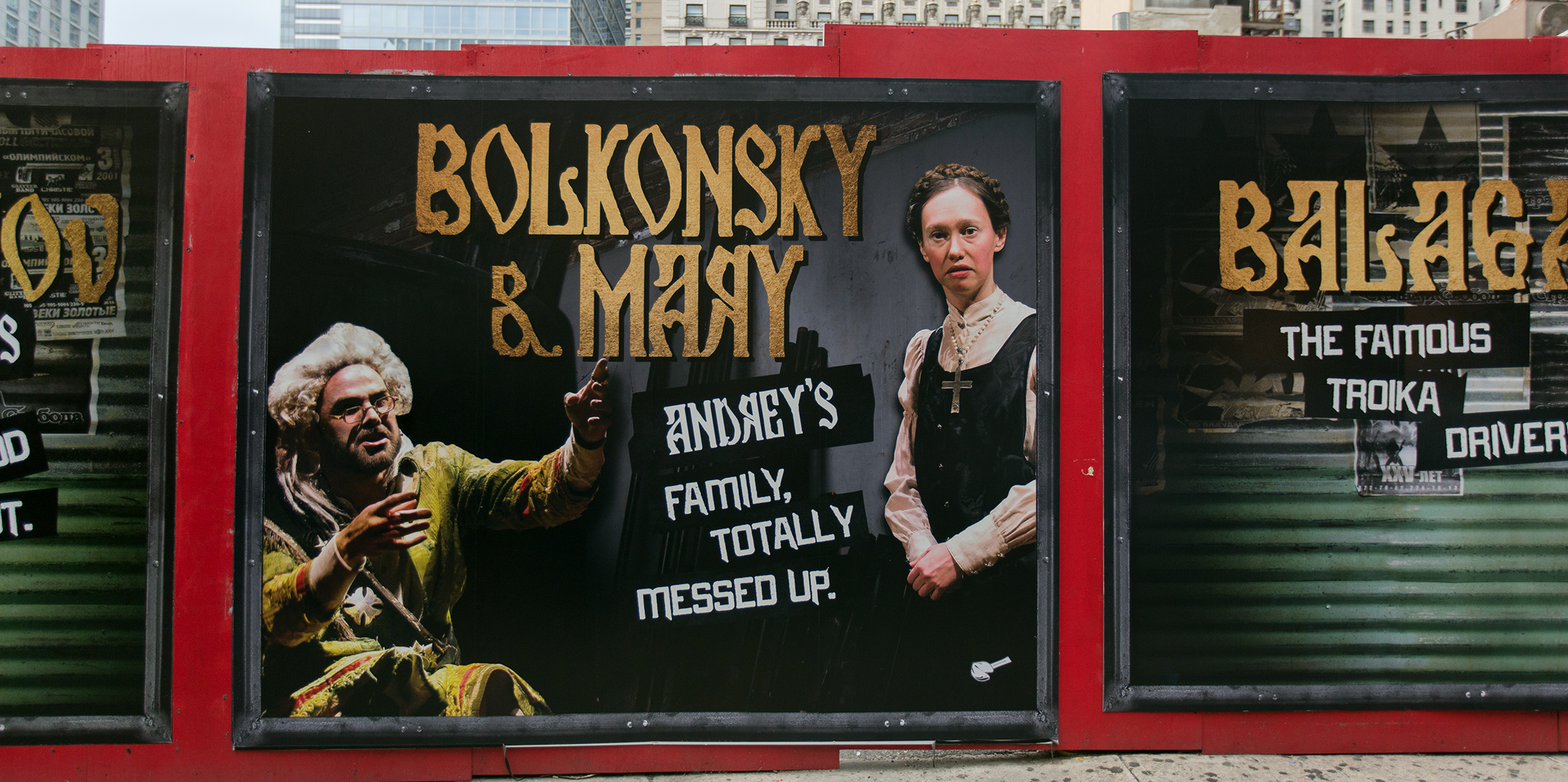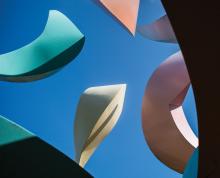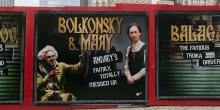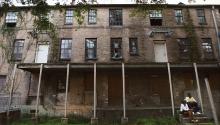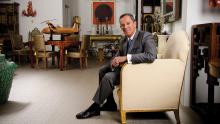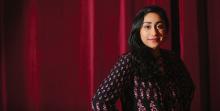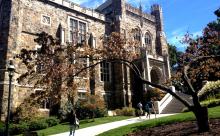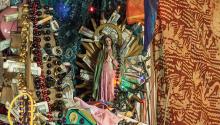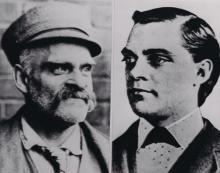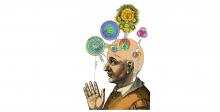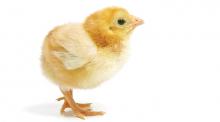
Two years ago Ricardo Viera celebrated Lehigh’s 150th birthday with a five-layer cake of stories.
The university’s curator/ director of galleries and museum operation organized an exhibit of 56 photographs depicting three centuries in South Bethlehem. He filled Maginnes Hall’s four floors with portraits of everyone from a boxer to a football kicker, everything from a farmers market to Bethlehem Steel’s Machine Shop No. 2. He added living color to the black-and-white photos by commissioning a conversation with them by Bill George ’73, a founding member of Touchstone Theatre’s ensemble, who collaborated with Viera in a street version of “Don Quixote.”
The shows exemplify Viera’s skill at turning exhibits into experiences. For 44 years he’s been engaging and engulfing Lehigh viewers with a global village of remarkably eclectic, remarkably magnetic objects: historic baseball artifacts; avant-garde photographs by Japanese women; multi-media installations by Latin Americans; West African sign paintings of America’s first African-American president. At the same time he’s supervised an academy/laboratory of conferences, concerts, happenings, outdoor contemporary sculpture, museum-studies programs and a permanent teaching gallery for selections from the permanent art collection, which he’s expanded from over 2,500 pieces to more than 15,000.
Viera will retire next fall. His final show, displayed through Dec.10 in Zoellner’s main gallery, contains 21 drawings by Wifredo Lam, the world modernist from Cuba, Viera’s homeland. It’s one of the first cultural exchanges between Cuba and the U.S. since the countries became diplomatic allies in 2015. Three years in the making, it was seeded 20 years ago during Viera’s first trip to Cuba in 35 years.
For decades Viera has been imprinting Lehigh with his protean personalities: son of a tailor; graphic designer; printmaker; installation artist; baseball fan; gourmet cook; bonsai tender; operatic singer; husband of a classical pianist.
“I am a very curious individual,” he says. “I love to solve puzzles; I love to complete mazes. I love to teach, and reach, people with new ideas, unfamiliar ways of looking at familiar things, passion and compassion. I love to work with, and learn from, the best. Life humbles me, and I love that.”
Viera’s early years at Lehigh were quite humbling. One of his first offices was a closet in Chandler-Ullmann Hall that resonated with the fumes of a former organic chemistry lab. His first major role was emergency caretaker. He moved paintings from the University Center to the Allentown Art Museum to save them from student projectiles of brussel sprouts, spoon-launched pats of butter, “anything that was round, by the pound.”
Viera quickly began making Lehigh’s permanent collection significantly bigger and dramatically better. Armed with a minor budget and major ambition, he became an expert negotiator. He exchanged oversized prints from an incomplete portfolio of William Henry Rau’s 19th-century photographs of the Lehigh Valley Railroad, discovered in Linderman Library, for pivotal photos by such pioneers as Julia Margaret Cameron and Diane Arbus. In 1976 he received a collection of American masters, including Weegee and Edward Weston. A gift from photographer and Academy Awardwinning filmmaker Lou Stoumen ’39, a native of nearby Hellertown, established Lehigh’s first group of teaching images.
Today, Lehigh’s photo collection is prized for its diversity of subjects and styles, formats and donors. Viera has accepted donations of celebrity Polaroids from the Andy Warhol Foundation and Cartier-Bresson prints from TV news anchor and former White House communications director George Stephanopoulos. He has a particularly rewarding partnership with Richard Thall ’55 and his wife, Alice, owners of an extremely wide range of boundary-pushing pictures. The couple’s gifts make up a Vieracurated exhibit of images by the highly influential abstract realist Aaron Suskind. Installed through Dec. 10 in Maginnes Hall, the show includes some of the 45 Suskind prints that the Thalls donated to honor Viera’s 45 years at Lehigh.
Viera has put Lehigh on the map of adventurous Latin American art, using his leverage as a guest curator for the Smithsonian Institution and cultural envoy for the U.S. State Department. One of his most impressive efforts was “Viajeros (Travelers),” a 2005 show of 142 images and seven videos of Cuba by North Americans, including Cuban expatriates. The project began when several photographers asked Viera to organize an exhibitbefore Cuban President Fidel Castro died and the communist country opened to capitalism. The request was very satisfying to Viera, who left Cuba for Miami in 1962, one of 14,000- plus children of anti-Castro parents imported during Operation Peter Pan.
Viera has also made Lehigh a hub for folk works by self-taught, visionary outsiders. Collaborating with Norman Girardot, professor emeritus of religion studies, he’s organized exhibits, installations and residencies by the late Mr. Imagination (aka Gregory Warmack), who created scepters and thrones with bottle caps, and the late Rev. Howard Finster, who fashioned mazes featuring space ships, herringboned angels and a baby prophet named Elvis Presley.
Art allows Viera to moderate a universal university. He encourages conversations between viewers by suggesting conversations between objects, by turning objects into characters. “I like to create parallels, and parallel universes, by balancing time, era and environment,” says Viera. “I like to take the weight off artists and put it on viewers, so they can not only see what artists produce, but feel what they induce. You can learn what is right and what is wrong, and if there is a right and a wrong.”
Viera challenged notions of wrong and right in a 2004 exhibit of Larry Fink’s large format photos comparing members of President George W. Bush’s cabinet to prostitutes, clowns and other sordid figures in pre-Nazi Germany. He chose the pictures because they were the first color images by a master of black-andwhite social commentary, and because they were “well-composed political cartoons” based on paintings by Max Beckmann, George Grosz and other notorious German Expressionists.
“The Forbidden Pictures” immediately became an international sensation, spurring a furor extending to the talk show of pundit Bill O’Reilly. Conservatives denounced Fink as a lunatic and a heretic. Viera was castigated as a traitor and a terrorist. Some critics erroneously demanded his deportation to Mexico.
Fink urged Viera to close the show early, a radical proposal from someone who swats controversy like a piñata filled with hornets. Viera’s response—“Over my dead body”— strengthened his admiration for Viera as an intellectual dragon slayer.
“Ricardo wants to break through the status quo into real thinking and impulses and feelings,” says Fink. “How often do you stand with a person and have a decent intellectual conversation and feel like you’re being hugged?”
Since then Viera has engaged in many intellectual embraces. In 2011 he curated an exhibit of photographs by women to celebrate the 40th anniversary of the admission of female students to Lehigh. There were so many styles and subjects, the exhibit was less about gender and more about the democracy of photography. In 2012 he marked the re-election of Barack Obama with West African shop-advertising portraits of America’s first African-American president as a tribal king, superhero and friend of Tupac Shakur, the martyred rapper.
Three years ago Viera began planning an exhibit fusing his present with his past. He grew up admiring Lam’s dynamic blend of abstractionism, surrealism and Afro-Cubanism. His admiration grew in 1997 when he discovered a private collection of the artist’s drawings in Havana while serving as a Spanish-speaking consultant to a Philadelphia organization’s cultural bridge-building project. In 2015, he began a series of intricate, intense negotiations with the drawings’ owner, Lam’s grandnephew Juan Castillo Vasquez; the Lam Foundation in Paris, which is run by the artist’s son Eskil; and the Cuban government, because Lam is part of the Cuban National Patrimony. The process confirmed Viera’s view of his homeland as a surreal home for dictators, major-league baseball players, and drivers of American cars from the ’50s.
Viera regards the Lam show as his Lehigh swan song. He pauses to contemplate what he’ll wear to the opening reception. “Should I,” he says with an impish grin, “dress like a swan?

